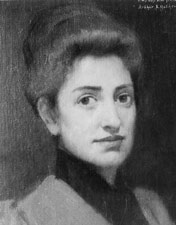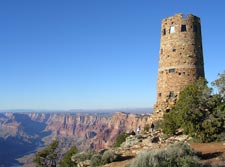The Grand Canyon
26/06/12 07:36 Filed under:Personal
Grand Canyon, America’s picture postcard
The Grand Canyon, one of the 7 natural wonders of the natural world, is just as great as the first time I saw it 35 years ago. Intensely dramatic and take your breadth away view, is still fantastic. Only then, I camped out on the ground after paying a nominal fee, stayed overnight and departing the following morning.
The Grand Canyon, one of the 7 natural wonders of the natural world, is just as great as the first time I saw it 35 years ago. Intensely dramatic and take your breadth away view, is still fantastic. Only then, I camped out on the ground after paying a nominal fee, stayed overnight and departing the following morning.
Grand Canyon, America’s picture postcard
The Grand Canyon, one of the 7 natural wonders of the natural world, is just as great as the first time I saw it 35 years ago. Intensely dramatic and take your breadth away view, is still fantastic. Only then, I camped out on the ground after paying a nominal fee, stayed overnight and departing the following morning.
The “ New” canyon like everything else in America these days, is pretty organized, has a big Visitors Center, many lodges and hotels, gift shops, general stores and places to buy everything from food and socks to baby moccasins, and all manner of back packing and hiking equipment, bicycle rentals and of course various restaurants, cafes and ice cream shoppes.
I was kinda surprised to see the new “infra structure” of big buses driving people from one viewpoint to the next, while stopping at the various lodges. These buses were full of international tourists . Its been along time since I heard so many languages spoken at once.... Reminding me of a time in NYC when the melting pot of the USA , resided near the United Nations and could be possibly now be transplanted to the American West. The majority of these natural / eco friendly visitors were from China, India, Korea, Germany, Japan, Russia, and India and a few sprinkled in Americans .
Workers in the lodges cafeteria’s were also global, with foreign exchange students here to learn English. I found myself always asking “ and where are you from ?” Some were better able than others to converse. The Chinese girls saying “yellow line” to explain food offerings written under the yellow line on the wall. A Phillipino guy said “he loved it there “A few American students there for almost a year trying to save money, pay off school loans, or just taking a break from the pressures of being young in our busy stressful materialistic society.

I really had fun questioning a couple of French girls from Niece touring the USA via Las Vegas and LA by car... A cute couple from Korea asked me to take their photo, and an IT worker from India the same. I think I was the only person there without a camera, I try to capture my memories in my mind and heart.
Its seemed more of an adult playground a kind of “Natural Disneyland” these days with planned recreation, classes, hikes, shopping and eating, and talks by park rangers about the biosphere of the canyon, concerns about certain species, its birds and animals. Yet, sitting on the simple back porch of the El Tovar Hotel and watching the sun disappear on this most amazing of American landscapes, I was still in awe.
I mused that I was glad to be part of this particular western place, where some say, “the best known unknown architect “ Mary Elizabeth Jane Colter spent a 40 year career as a female architect, and pioneer of western design.


She used the Native American motifs and lodge designs of wood and stones of the southwest , to recreate the feeling of the rustic style of earlier inhabitants. Her unique Hopi House built in 1905 was made by Hopi craftsman who demonstrated their arts even the famous Nampeyo made pottery at this site, and is still in use today .
The legacy of the infamous “Harvey Girls” is now housed in the Bright Angel Lodge -History Room, itself featuring a “GEOLOGIC” fireplace mirroring the cross section of the canyons layers of stone and rock. Here, Mary Colter created a space that reflected its larger more important historic surroundings as a focal point.
This room displayed exhibits of Fred Harvey’s Santa Fe Railway passenger service, and its infamous “Harvey Girls” the hostesses, shop girls and waitresses who also worked at the Grand Canyon lodges. Their starched long white crisp aprons, and hair piled up in a stylish bun, created an image of a competent and modest ( and probably very hard working ) attractive young woman of the last century.
In 1926 they added the Southwestern Indian Detours by hiring a select group of college educated young women to conduct tours around the southwest in motorized cars to wealthy eastern travelers. These female tour guides were stylishly costumed in beautiful traditional Native American silver and turquoise jewelry, and were well versed in southwestern archeology, history, geology and cultural nuances of the west.
It was fun to travel to such a grand historic place only to discover Mary Colter, an important woman architect. Her works are part of the select National Registry of Historic Places. Viewing her accomplishments in a protected treasure of the nation’s most famous landscape made for a double treat.
Ironically, I now have come full circle at the La Fonda Hotel in Santa Fe. I never knew that this fantastic bar and cantina and remodeled dining room of the 1930 era was designed and decorated by the now familiar named architect, Mary Colter. And she retired at 74 years old to live out her life in Santa Fe after her long career with Fred Harvey of decorating and designing his hotels and lodges, and died here in 1988.